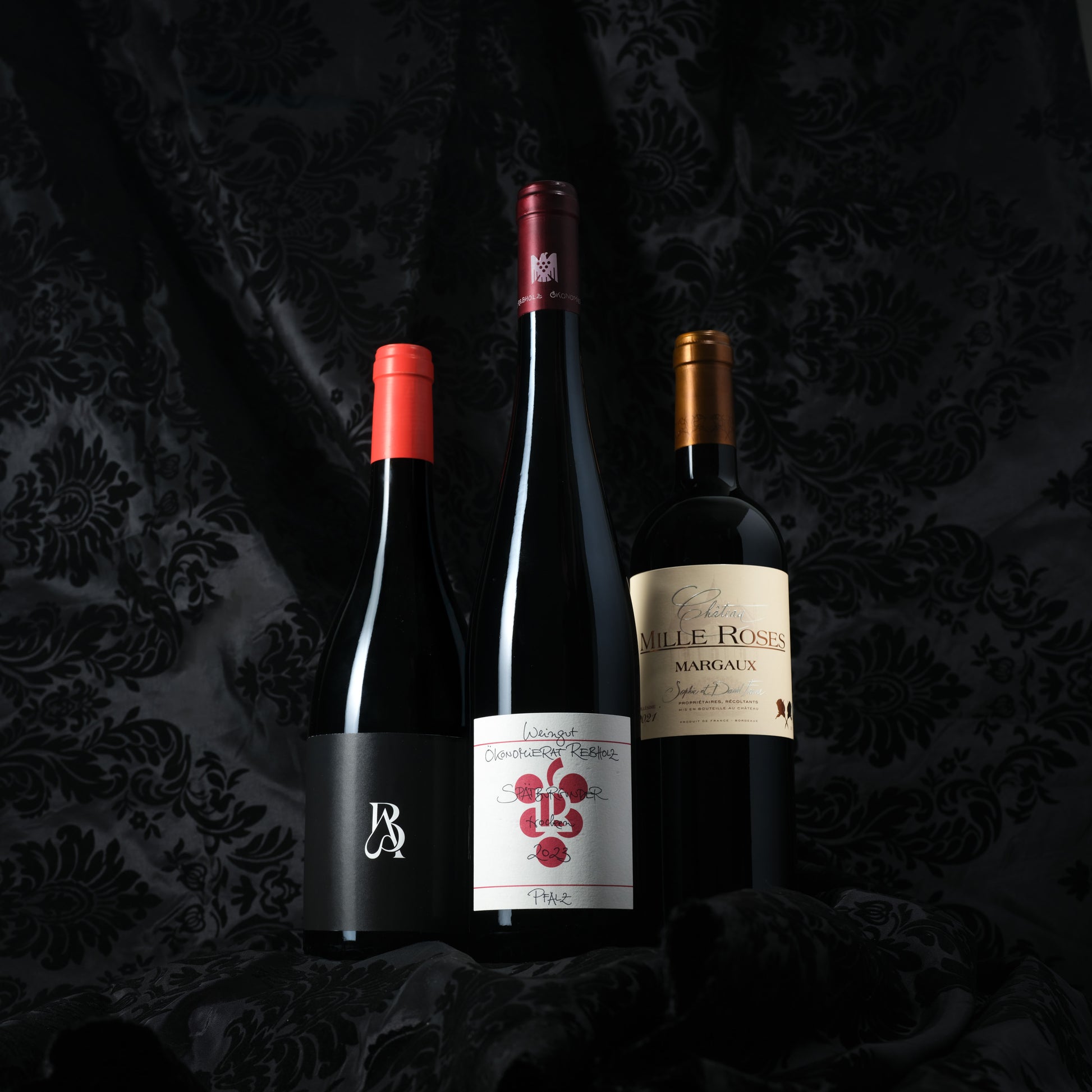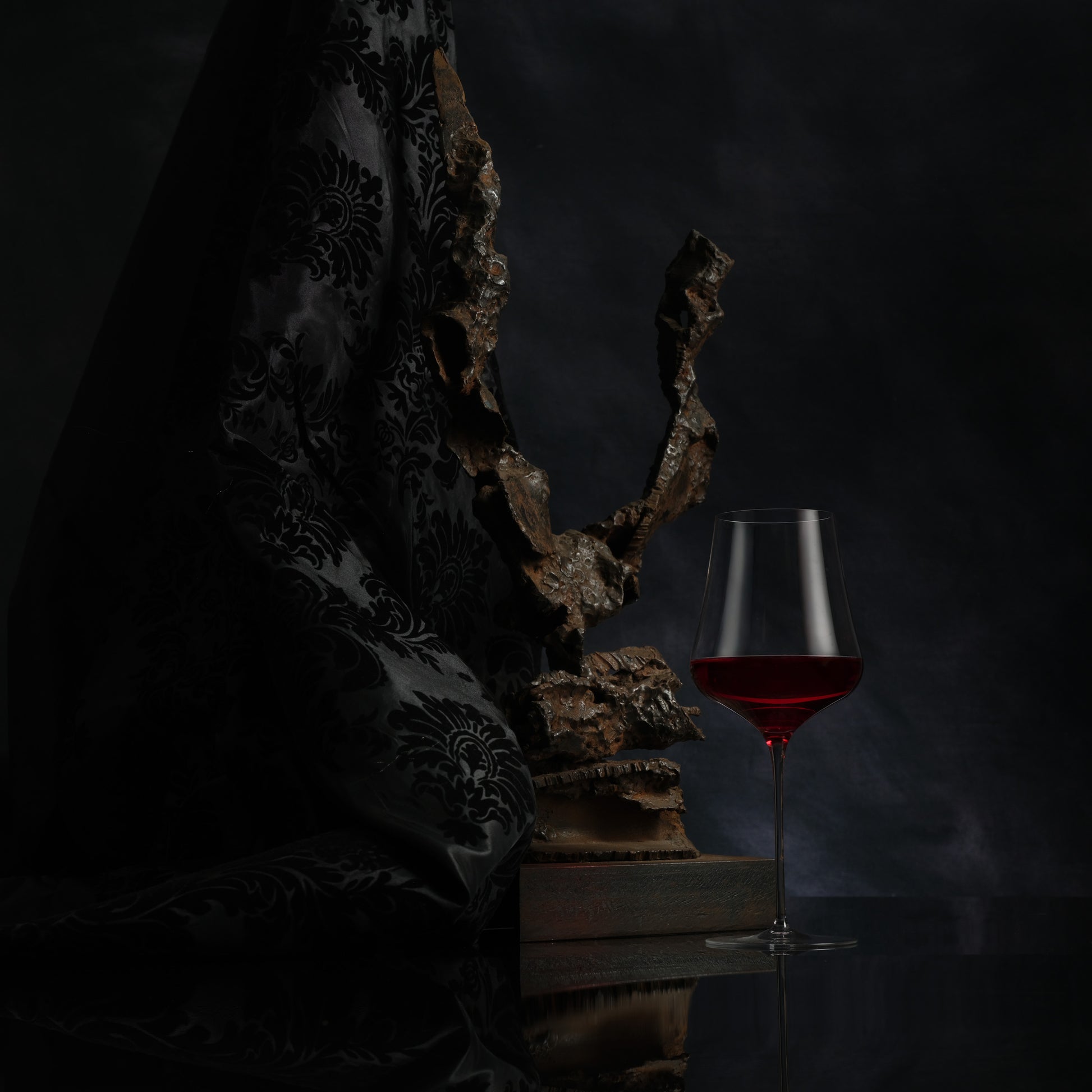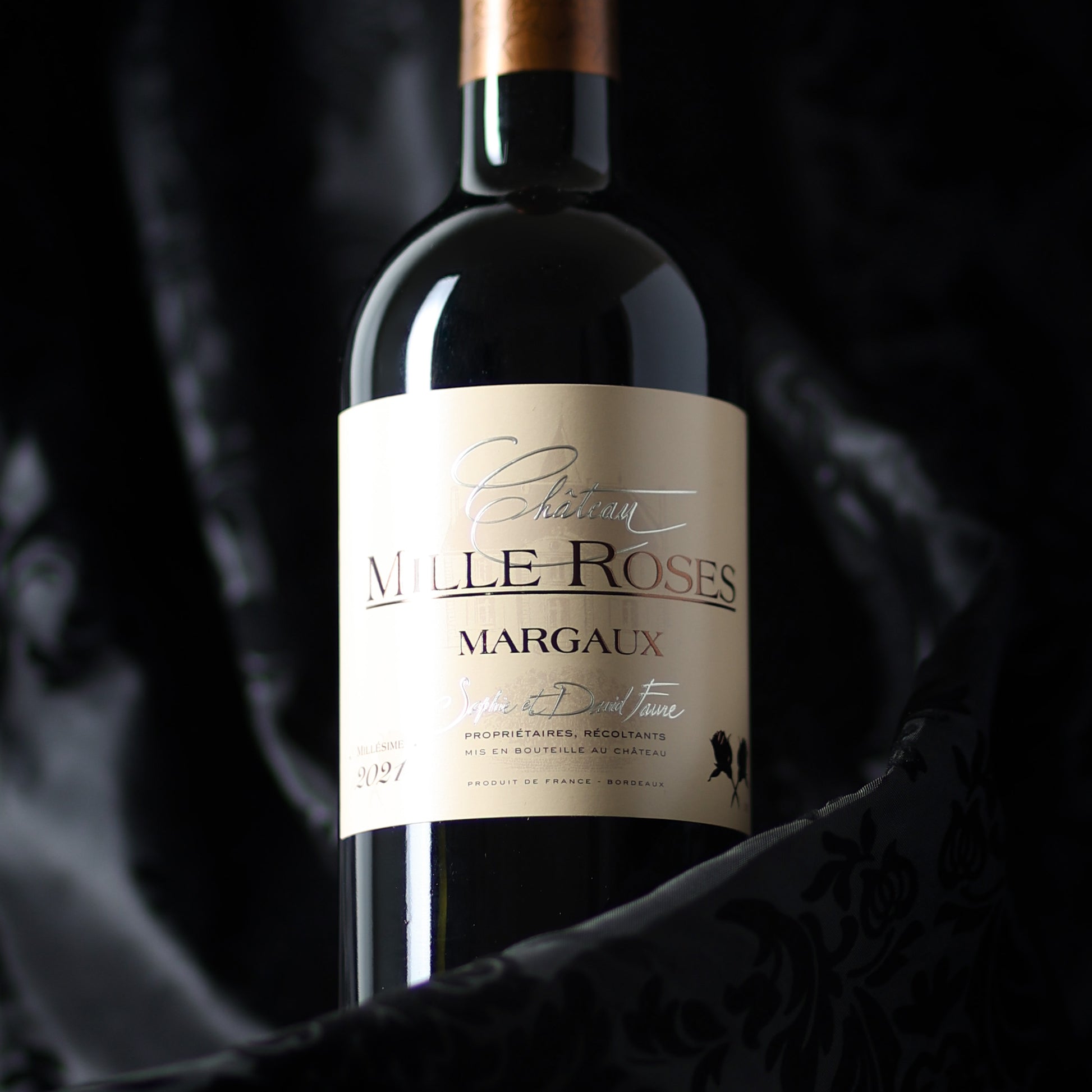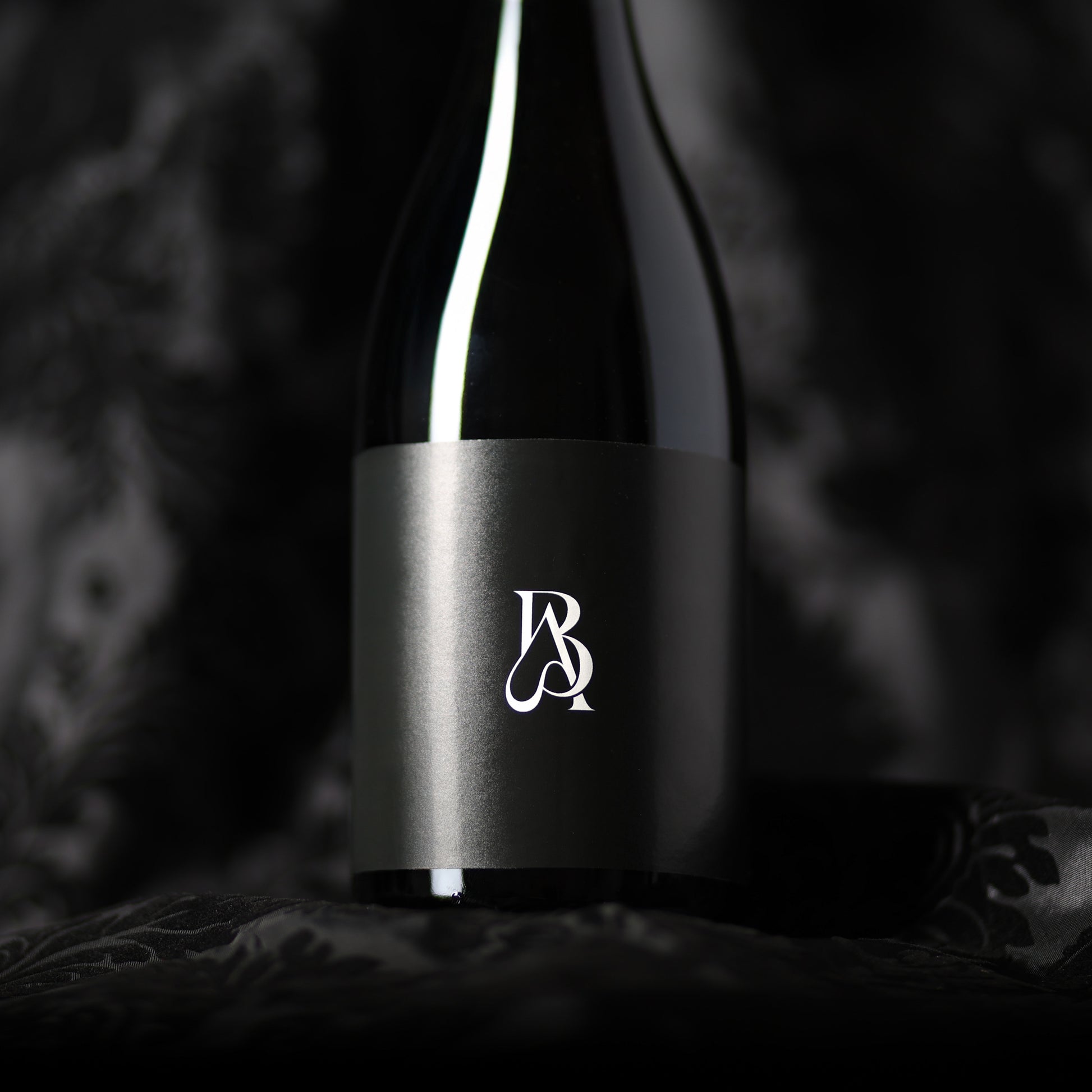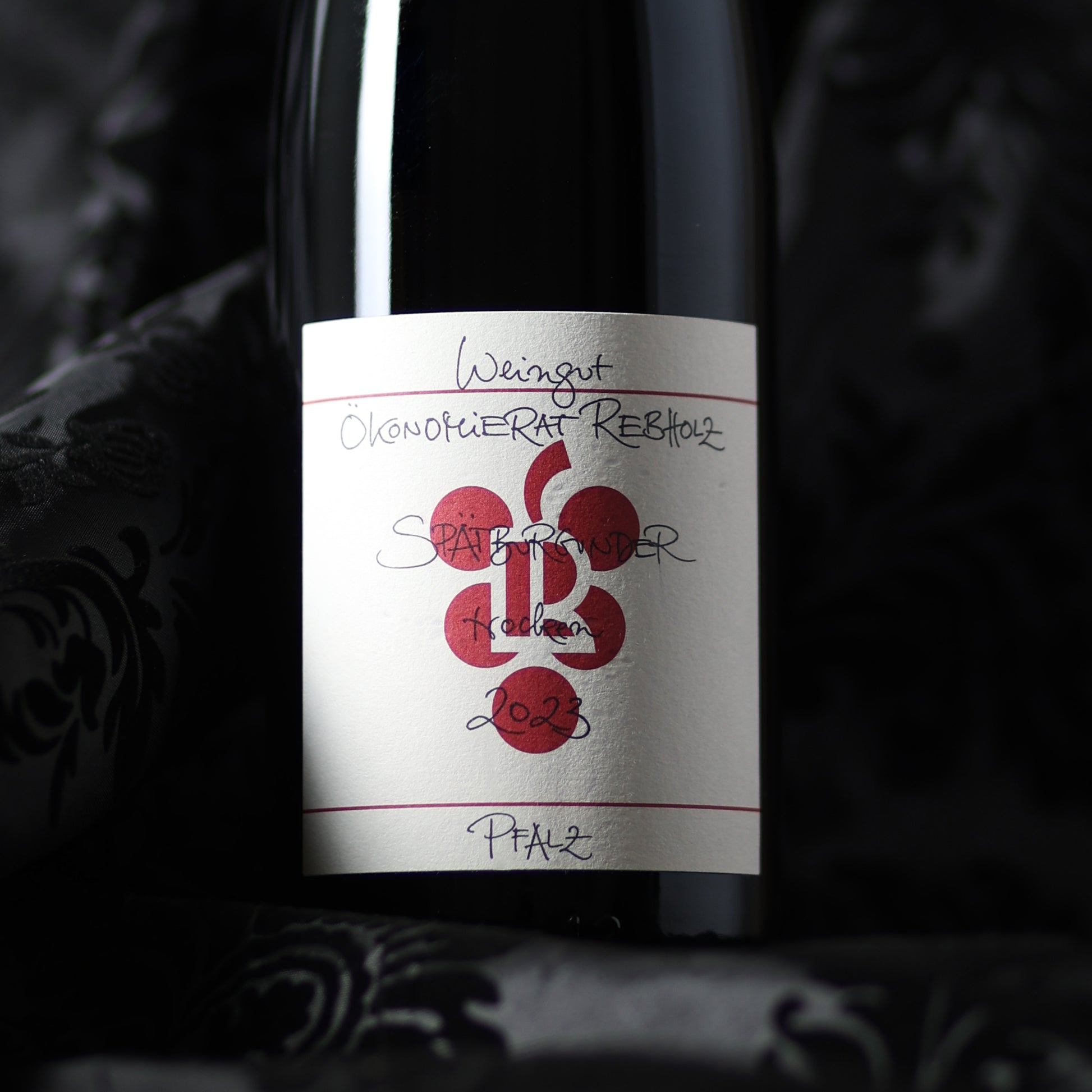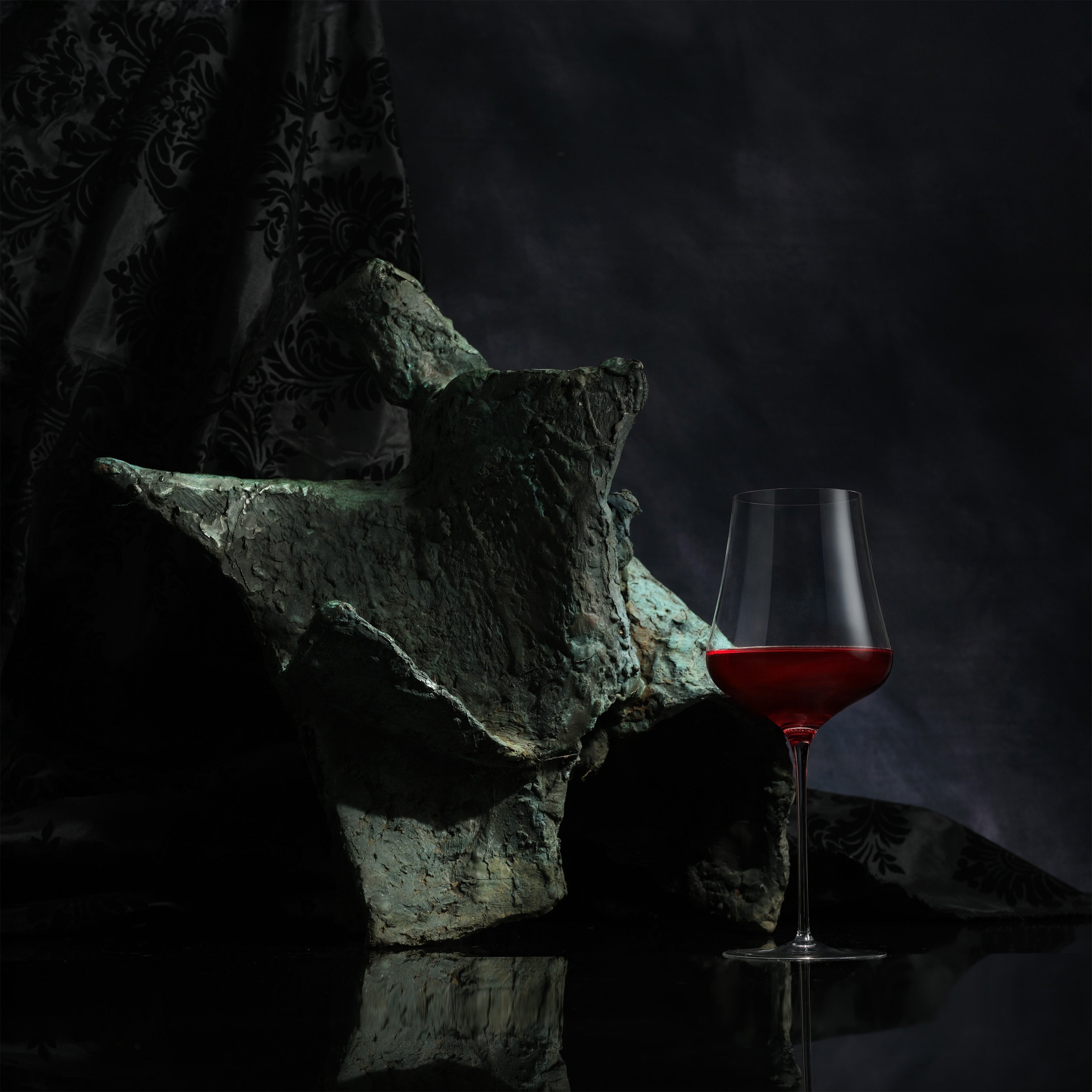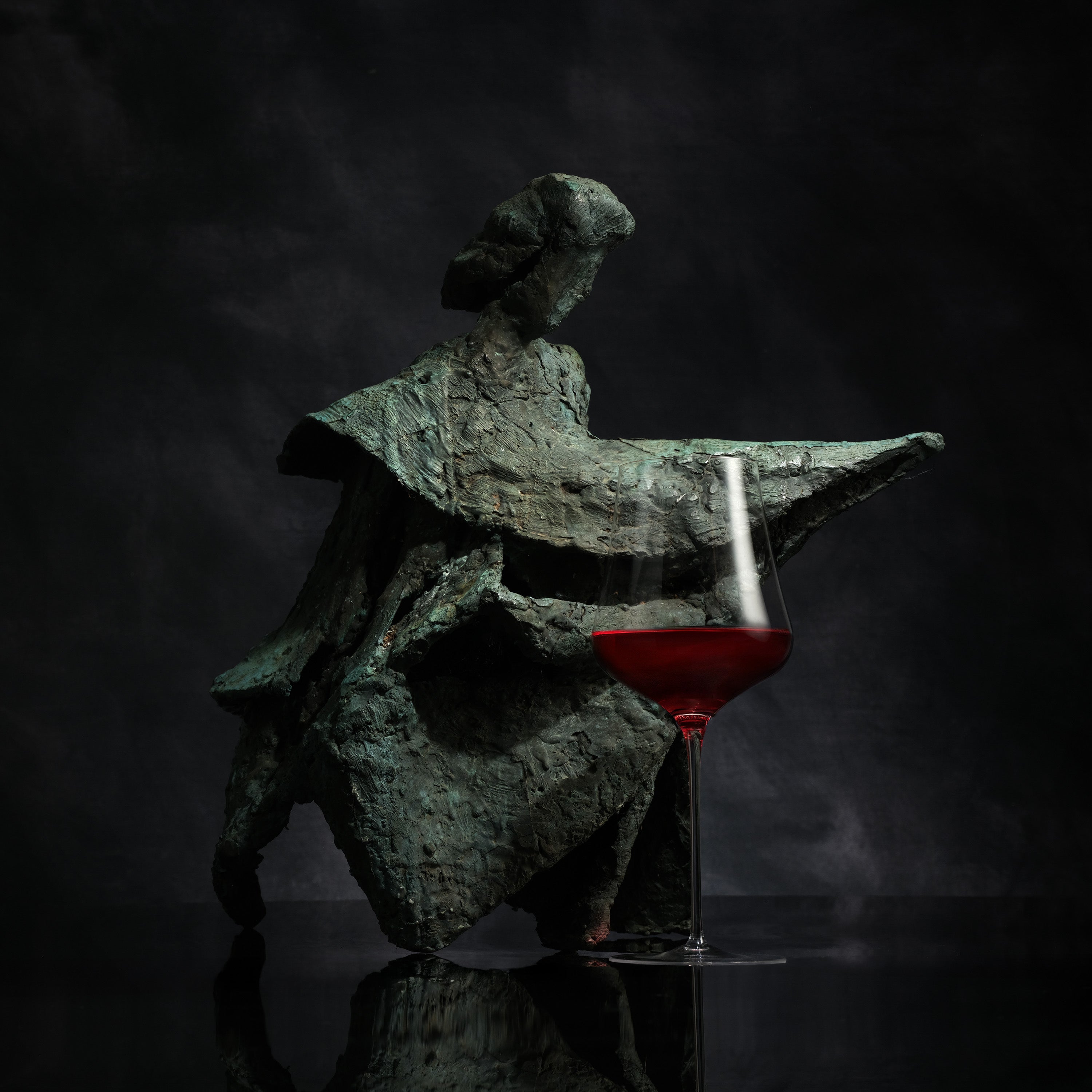The Black Collection
The Black Collection
Welcome to Dry Farm Wines Black.
We invite you to indulge in a hyper limited collection of some of the rarest wines on the planet. Dry Farm Wines Black is our most prestigious membership, giving you access to three thrilling artisan wines every quarter – powerful, classic taste profiles worthy of a Michelin meal or some rest in a cellar.
In our Autumn Collection, we are excited to showcase three exceptional treasures:
- 2021 Château Mille Roses Margaux
- 2023 Rebholz Spätburgunder
- 2023 Berry-Althoff La Noire
Couldn't load pickup availability
- 3 Bottles Delivered Every 3 Months
- 2025 schedule: March, June, September, and December
- Limit 1 per customer
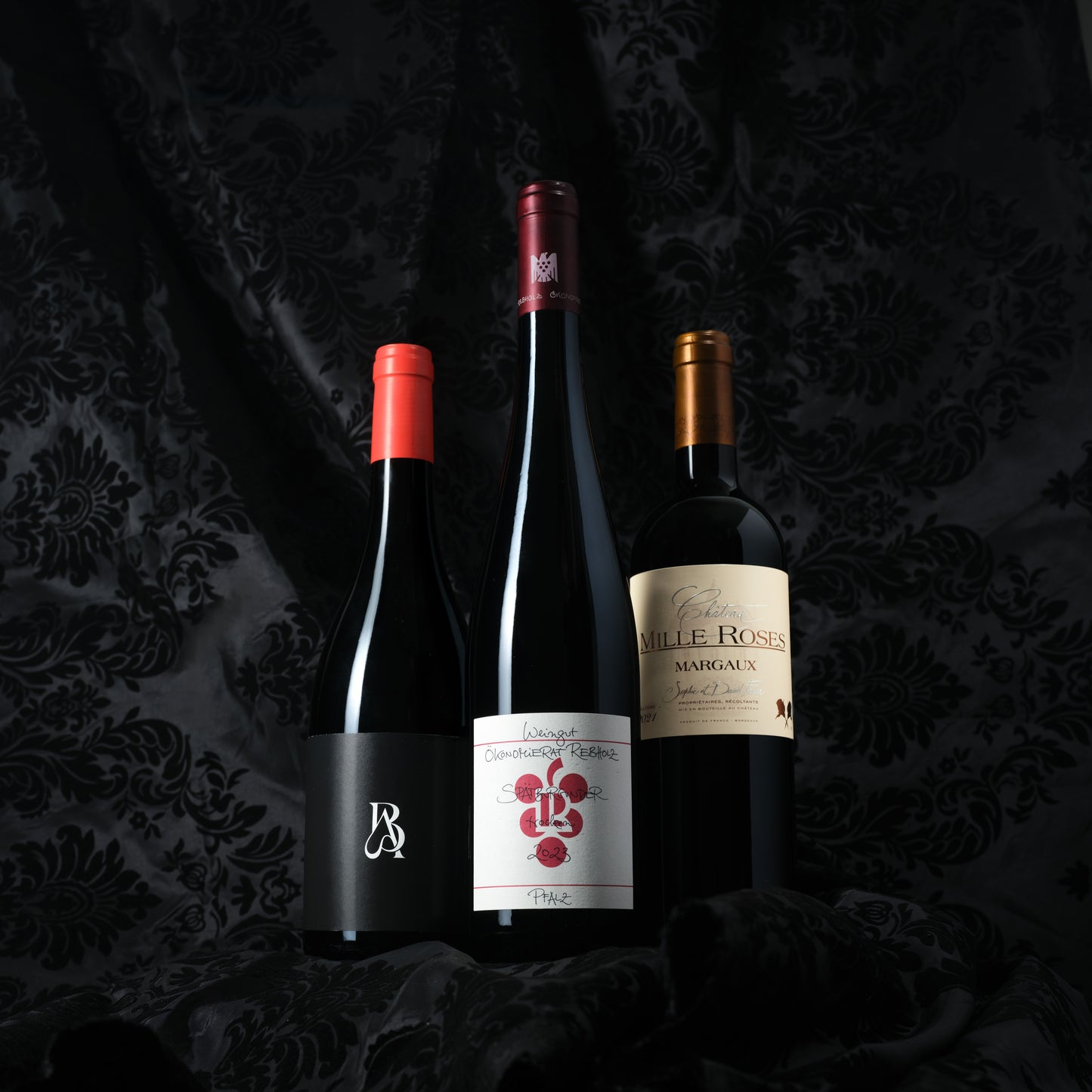
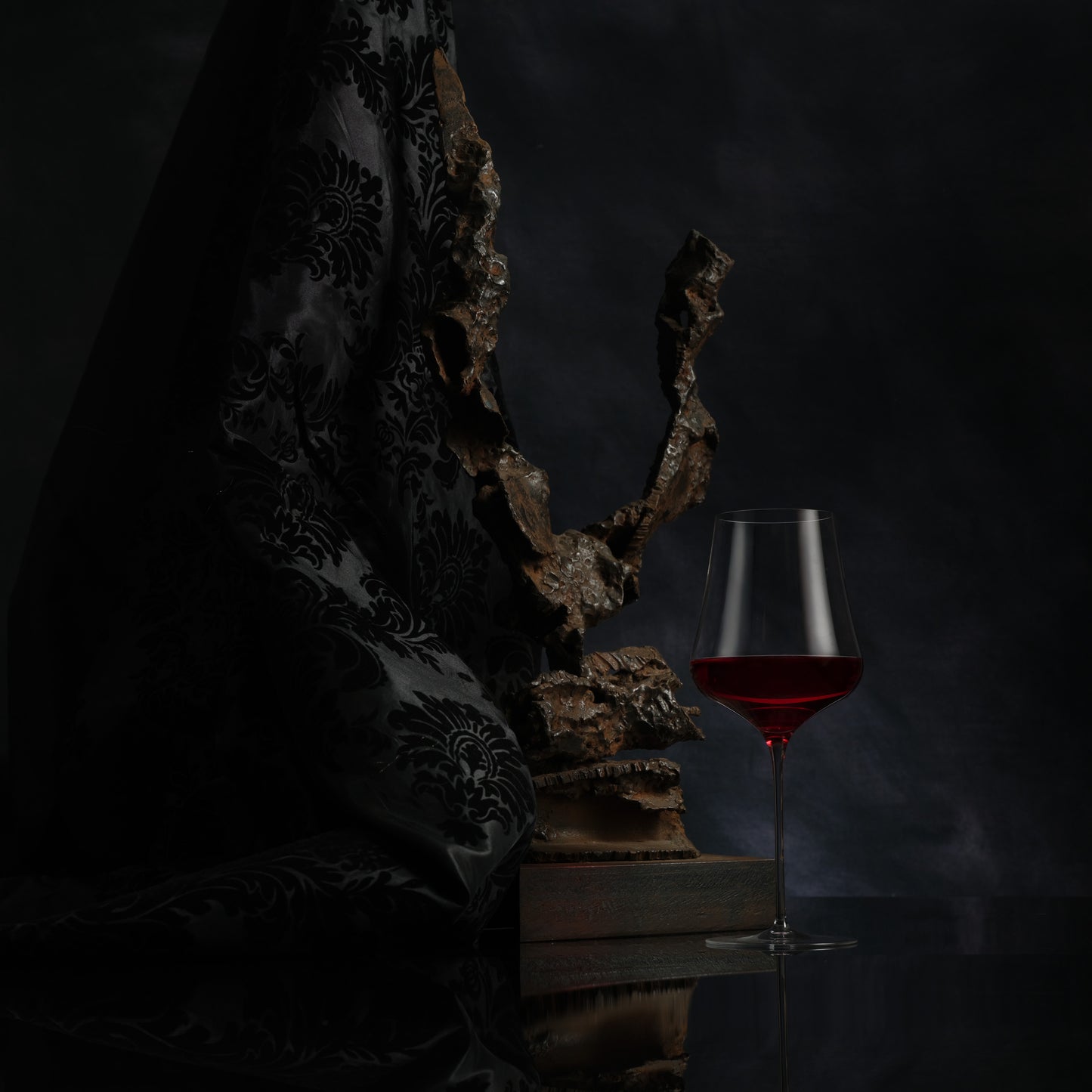
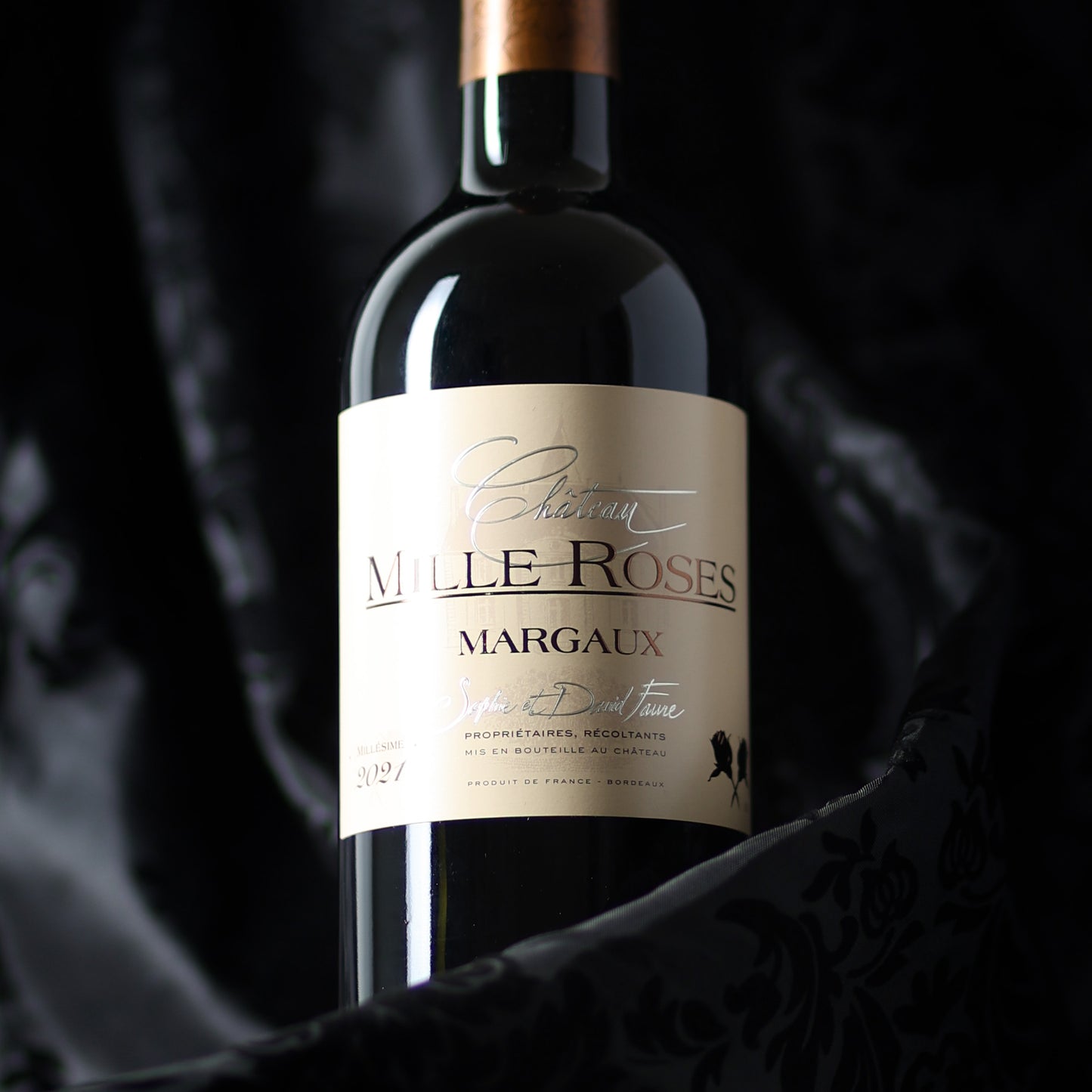
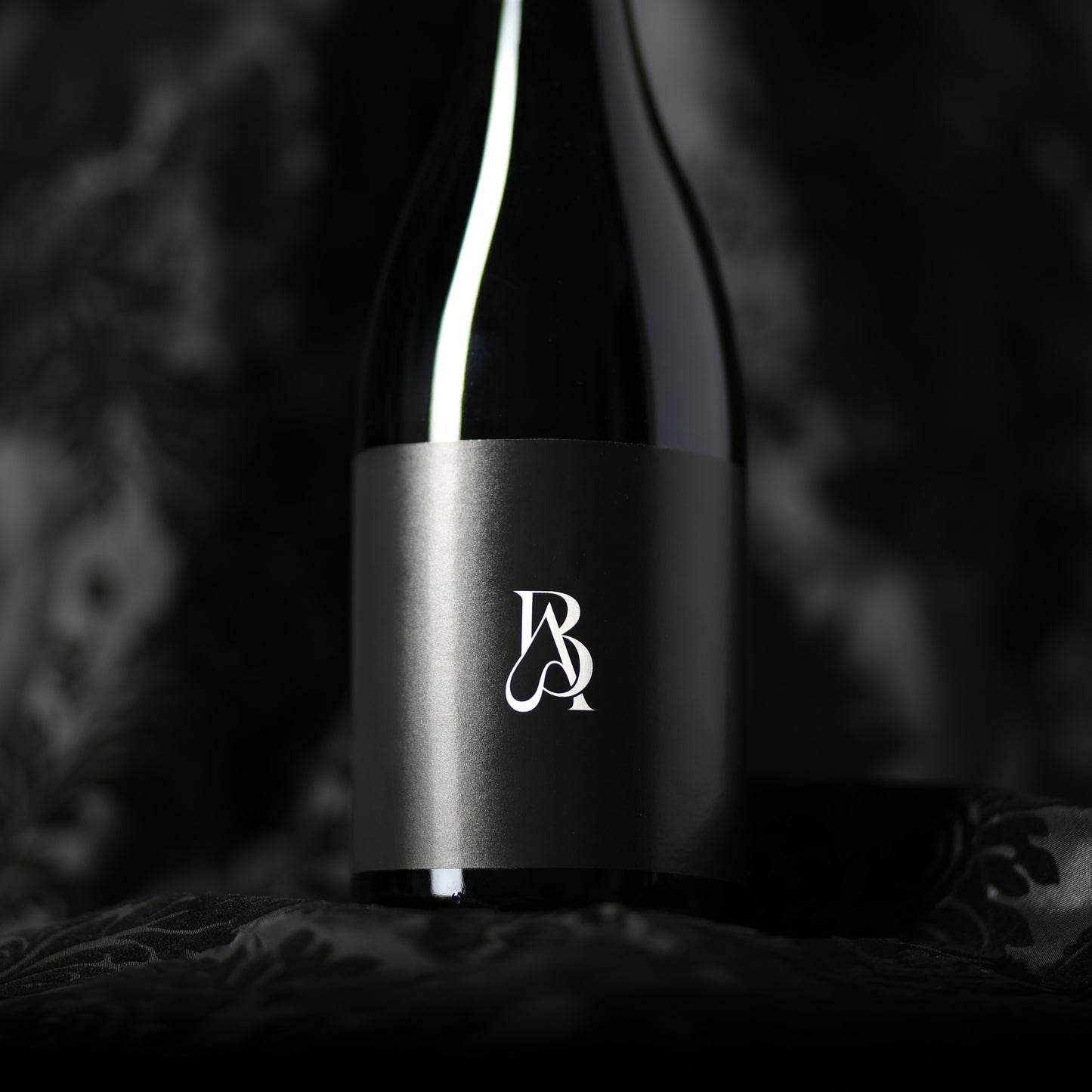
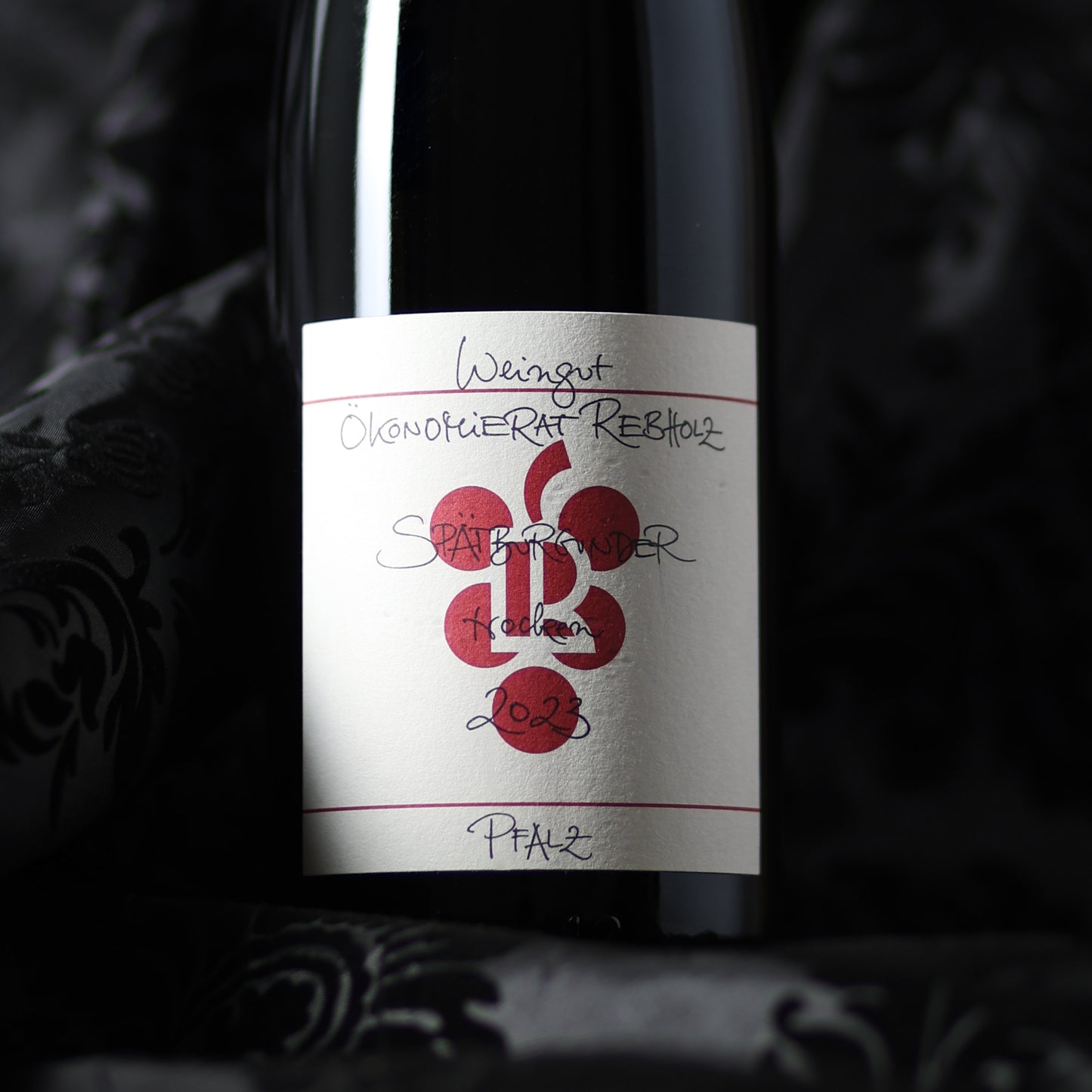
Autumn Release Wines
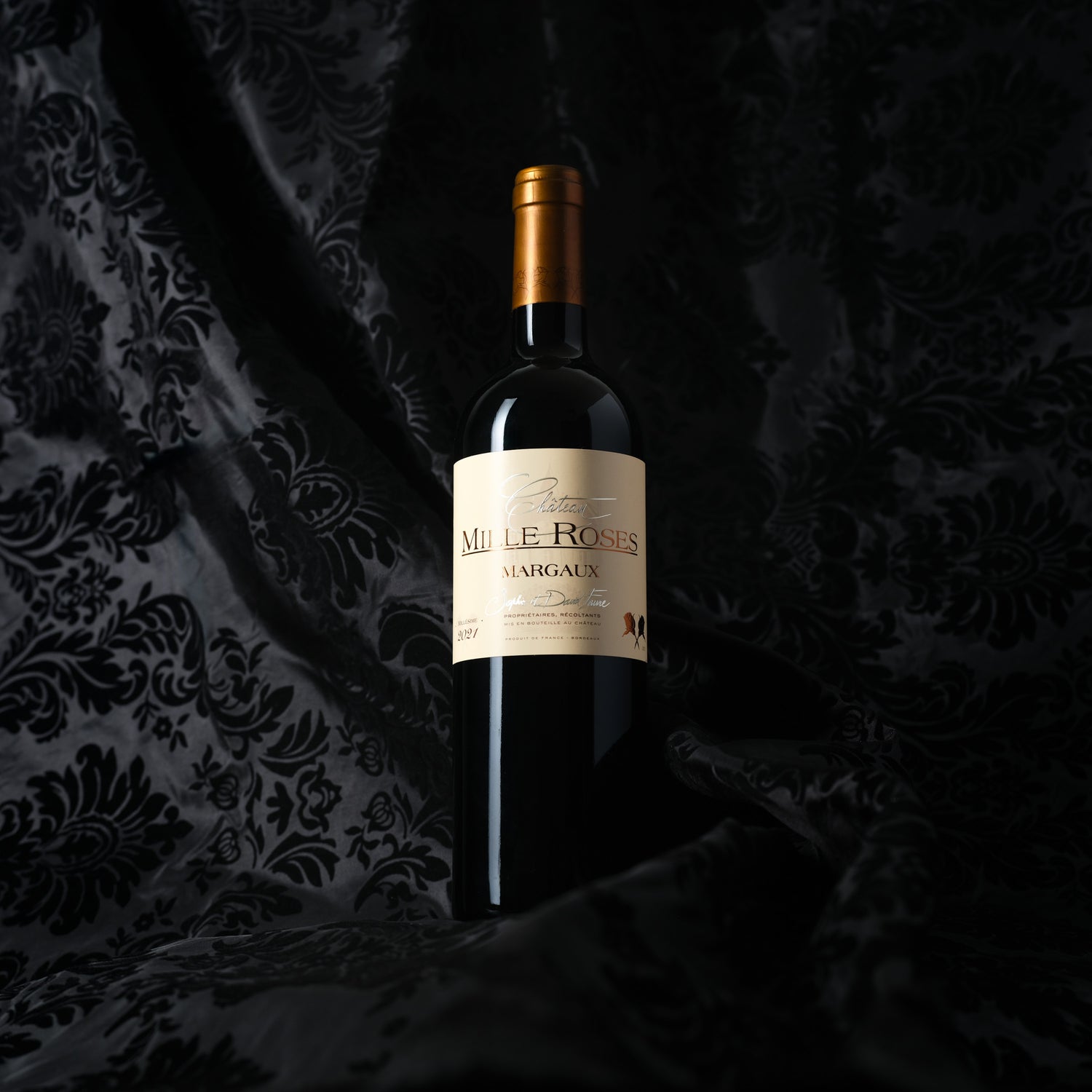
2021 Château Mille Roses Margaux
Varietals
75% Cabernet Sauvignon, 25% Merlot
Stemware Recommended
Tall Bordeaux Stem
Drinking Window
Now until 2036
Tasting Notes
At first whiff, this is a wine that could only be from Margaux. Vintage elements of cigar box, vanilla, and black and red currant are present alongside kisses of smoke, on-the-vine blackberry, and freshly-cut grass. The palate is a veritable blockbuster, bringing immediate, present tannin alongside gobs of dried red and fresh black currant, and a satisfyingly bright snap to the finish. This is a wine that will only get better for the next eight to ten years.
Local Pairing Suggestions
Viandes rôties, Filet de canard au foie gras, Pigeon au lard et aux champignons
12.5% Alcohol | 58°F Serving Temp | Yes, for 30 minutes to 1 hour
The Grower
Château Mille Roses is a rare story of rebirth among the hallowed vineyards of Margaux. Re-established in 1999, a young David Faure inherited a centuries-old Château and a tiny half hectare plot from his parents, and since has done everything to revitalize this venerable place. Named for the rose bushes his mother was so fond of, their four hectare plot in Margaux boasts the same large gravel stones, and yellow clay that’s made this appellation one of the world’s greatest. Cared for by hand without the use of chemical fertilizers, pesticides, or herbicides, the Cabernet and Merlot grapes that grow here, are hand-picked, and hand-sorted before they end up in oak barrels, at least 30% of which are new. Theirs is a fresher, more vibrant style of Margaux, that still retains the power and structure these wines are revered for.
The Vineyard
| Vineyard Altitude | Vine Age | Soil Type |
| 30 meters | 25 years | Garonne Gravel |
Lying just 30 meters above sea level, the 25-year-old vines draw from classic Garonne gravel with veins of yellow clay. Rows are oriented north–south to maximize sunlight, a subtle but critical detail in a region with minimal slopes. Certified organic since 2013, these vines stand shoulder-to-shoulder with classified growths of Margaux.
The Vintage
2021 was a cooler year, pushing harvest later than usual. Yields were low, just 26 hl/ha, but the sacrifice delivered concentration and balance. Cabernet Sauvignon dominates, imparting tension and freshness, while Merlot adds roundness, culminating in a classically styled Bordeaux.
Winemaking
Fermentation and maceration in stainless steel, followed by malolactic fermentation in oak. Aged 18 months in barrel (one-third new oak), on fine lees, before delicate filtration.
The Region
Margaux is the southernmost commune of the Médoc, and perhaps the most elegant of Bordeaux’s great names. Though the Médoc is a patchwork of famous appellations, Margaux stands apart for its singular gravel soils, which impart finesse where neighboring villages often deliver power. A sommelier once remarked that “Margaux is the perfume of Bordeaux,” and it’s true: the wines carry both structure and a haunting aromatic lift. Deep beds of Garonne gravel, flecked with clay and limestone, drain quickly yet force the roots deep, creating wines of concentration without heaviness. At their best, Margaux wines remind us why this appellation has been revered for centuries: they combine the strength of Cabernet with a texture and grace unmatched anywhere else in Bordeaux.
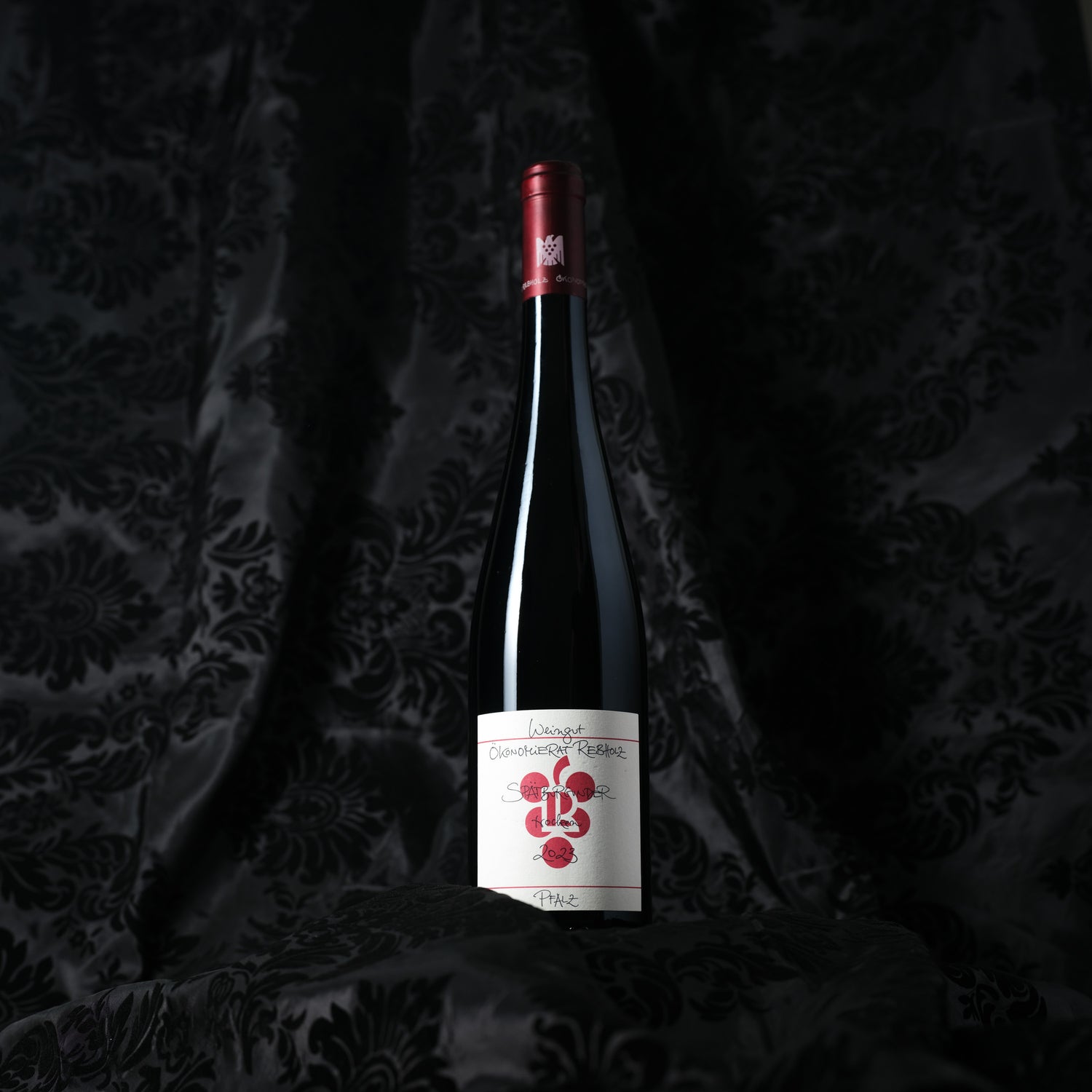
2023 Rebholz Spätburgunder
Varietal
100% Pinot Noir
Stemware Recommended
Wide-bowled Burgundy Stem
Drinking Window
Now until 2030
Tasting Notes
Sourced from two esteemed premier cru sites for German Pinot Noir, this bottle wears its class on its sleeve, from its pristine ruby robe to its entrancing aroma. The wine’s profile gently sways between ripe red cherry and raspberry punctuated by vanilla and caramel before descending to a rich, decadent palate with the same fruits, tantalizing herbaceousness, and persistent, velvety tannins.
Local Pairing Suggestions
Zwiebelkuchen Onion Pie, Duck Breast, Pilzragout Mushroom Ragout
11.7% Alcohol | 57°F Serving Temp | Decant? No
The Grower
The Rebholz family has been at the vanguard of conscientious winegrowing in the Pfalz for decades. As early as 1951, Eduard Rebholz, the grandfather of the youngest generation of Rebholzes, was speaking about their wines as a “product of nature,” and in 2005, the estate totally eliminated the use of synthetic chemicals in the vineyard. This lively Pinot Noir comes from vineyards planted limestone and calcarius loess originating in the Triassic period. The mash is cold-soaked before fermentation, bringing the lovely, unique aromas of these Pinot Noir vineyards to life.
The Vineyard
| Vineyard Altitude | Vine Age | Soil Type |
| 200–250 meters | 15–50 years | Shell limestone (Muschelkalk) & loess loam (Löss Lehm) |
Perched at 200–250 meters, with vines from 15 to 50 years of age, the vineyards straddle two celebrated sites: “Im Sonnenschein” (Grosses Gewächs, on shell limestone) and “Arzheimer Rosenberg” (a premier cru). Southern exposures provide optimal sunlight, while older German genetics lend firm acidity and younger French clones add fruit purity.
The Vintage
A hot, dry summer was balanced by timely rain before harvest, creating ideal ripeness and acidity. Though the rain carried risk, quick, careful picking ensured pristine fruit by September 19th.
Winemaking
6-day cold maceration, 3 weeks on skins with daily pumpovers and punchdowns. Aged 16–18 months in estate oak barrels (20% new), resulting in Pinot of finesse and length.
The Region
The Pfalz is one of the largest wine-producing regions in Germany - however, like in other large wine-producing regions, there are gems just waiting to be uncovered. When we last visited the Pfalz, one of our growers told us that, “this will be, without a doubt, the next Burgundy.” He had torn up plenty of Riesling and Pinot Gris to be replaced by Pinot Noir and Chardonnay, so strong was his conviction. Due in part to the altitude here, the higher latitude, and the hardy limestone and loess soils, the Pinot from this place tastes more like Burgundy did 50 years ago than virtually all wines from the Côte d’Or.
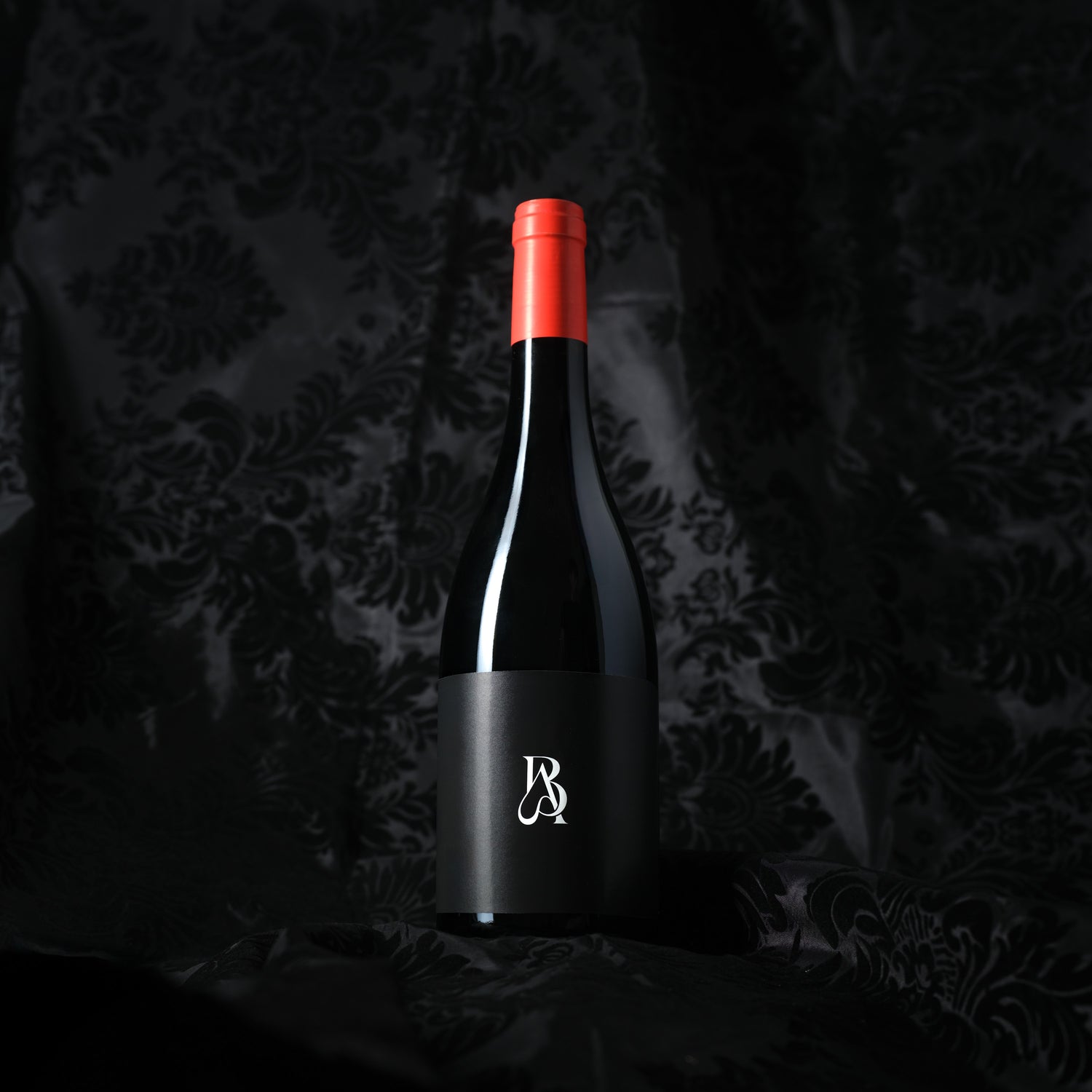
2023 Berry-Althoff La Noire
Varietal
100% Cinsault
Stemware Recommended
Wide-Bowled Burgundy Stem
Drinking Window
2026 until 2031
Tasting Notes
The La Noire is the Grand Vin from the thrilling winemaking couple of Berry-Althoff - this cuvée will unfold fully into itself after the year 2026, we recommend drinking it after then. Cinsault typically delivers a strawberry-scented wine of peerless quaffability, but old-vine Cinsault creates something altogether unique. Brimming with charming ripe cherry and macerated strawberry on the nose, there is an unmistakable mineral streak to the La Noire that entrances with depth and nuance, while the palate combines these fruited and mineral elements with long, fine-grained tannins that promise a long life for this utterly delicious red.
Local Pairing Suggestions
Daube Provençale, Agneau de Sisteron, Tian de Légumes
12.23% Alcohol | 56°F Serving Temp | Decant? Yes, for 30 minutes to 1 hour
The Grower
Imogen Berry and Robin Althoff, a young married duo, are making waves across France with wines of precision and vitality. With cellar experience spanning Burgundy, Napa, Chile’s Maipo, and South Africa’s Stellenbosch, they have distilled global insight into a singular local expression. From their refurbished cellar in the village of Aubais, they hand-pick old-vine parcels and craft wines that somms across France are already championing, soon, the wider world will follow.
The Vineyard
| Vineyard Altitude | Vine Age | Soil Type |
| 120 meters | 57 years | Valanginian limestone |
At 120 meters on a plateau of Valanginian limestone, 57-year-old vines are gobelet-trained to shade grapes in the southern heat. The cuvée comes from the first “little plot of land,” that Berry and Althoff acquired, marking the genesis of their estate’s journey.
The Vintage
2023 opened with a wet spring, followed by a bone-dry summer and harvest under clear skies. A late August heatwave briefly tested the vines, but early picking preserved freshness and balance. The result: vibrant acidity carried by healthy, concentrated fruit.
Winemaking
12-day destemmed maceration in stainless steel, followed by temperature-controlled fermentation (22–25°C) with daily pumpovers. The wine aged 12 months in a trio of vessels: used oak foudres, 400 L French oak, and Italian amphora. The triad achieves nuance and textural complexity.
The Region
The Languedoc and Aubais
Although the Languedoc may be widely-known as a region replete with affordable and forgettable red wines, there are pockets in this massive region that hold the promise of some of the world’s best wines. Imogen Berry and Robin Althoff carefully hand-selected the parcels they would work with as they began their winery project, and this, their first parcel, shows that it isn’t always about the larger region, but about the vineyard itself. Decorated with gnarly, once-abandoned Cinsault vines, and boasting ancient, rare, limestone soils, the wines from this parcel in the Aubais taste more like Burgundy than anything close to their neighbors.
FEATURED IN
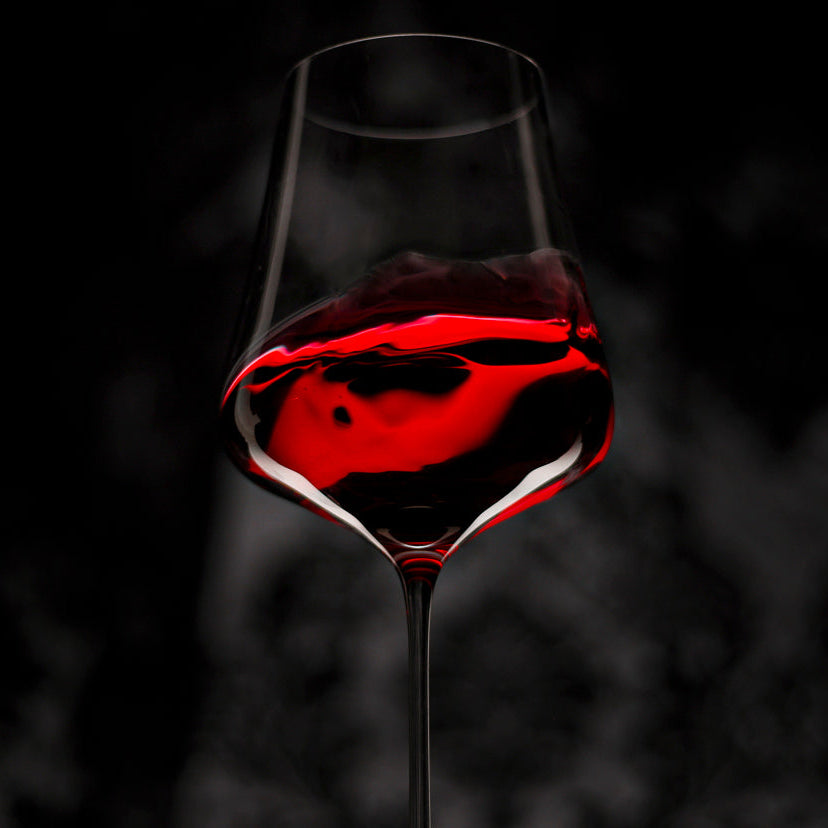
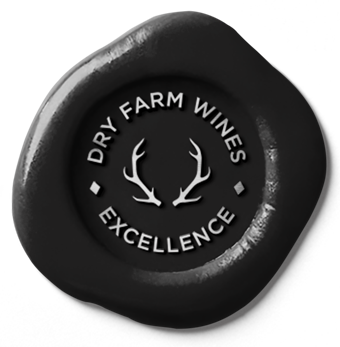
Our Seal of Excellence
A peerless commitment to wine purity. Every bottle of our artisan wine meets these standards:

